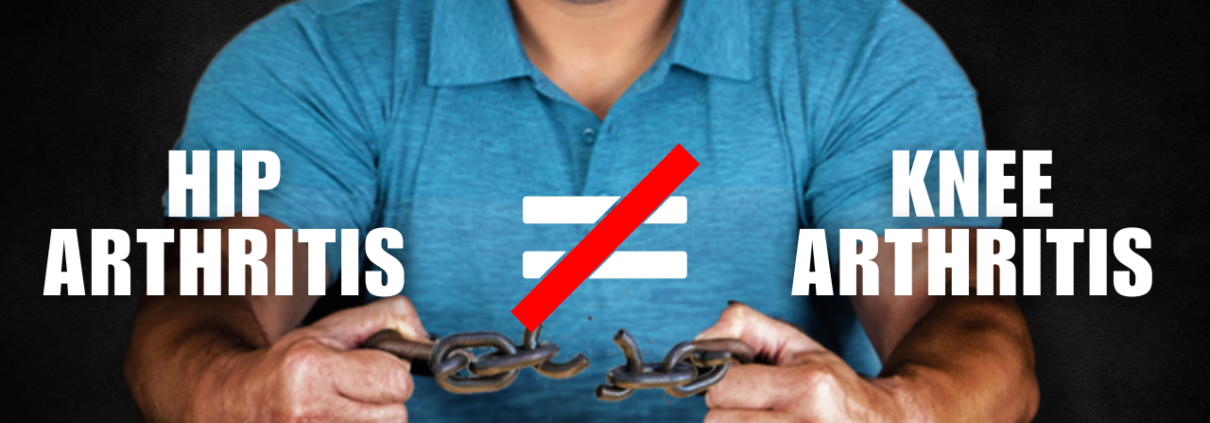Could My Inner Knee Pain Be Pes Anserine Bursitis
Are you suffering from pain on the inside of your knee? And you think that it might be coming from pes anserine bursitis? And are you wondering what the heck is this thing? What kind of medical terminology are we talking about? Your Pes Anserine Bursitis. Well, I’m going to explain this all to you in detail and give you a thorough explanation of what pes anserine bursitis is and why it’s causing your inner knee pain.
My name is Dr. David Middaugh, and I’m a specialist physical therapist at El Paso manual physical therapy. And this channel is dedicated to helping people stay healthy, active and mobile. while avoiding unnecessary surgery, injections and pain medications. Please subscribe to our channel so that you don’t miss out on any of the helpful videos that we post every single week. Well, let’s get into today’s explanation, I’m going to tell you exactly what has add serine bursitis is and I’ve got this drawing here to help me explain.
So to orient you here, this is the thigh bones and the shin bones. Here’s the knee joint, that’s the kneecap right there. Here’s the five bone and the shin bone down here. These three muscles that I’ve drawn in different colors all converge at the inside of the knee. And this green little circle sack thing right here is the bursa. Now these muscles just in case, you’re wondering what they’re called, this is the Sartorius muscle and read the semi tendinosis muscle in orange, that’s one of the hamstring muscles and the chrysalis muscle in purple.
The purple one is the groin muscle, it’s an inner thigh muscle, all these muscles come together and their tendons kind of merge right on the inside of the knee just past the knee joint line below there. And you have this Bursa there that’s designed to reduce the friction between all those tendons and the bone so that you can move your knee freely without the tendon rubbing against the bone or the tendon wearing itself down. So the point of the bursa is to reduce friction in the area.
So you can have the best possible motion, the bursa gets inflamed that’s why we call it bursitis. itis means inflammation of whatever it’s attached to. So Bursa bursitis inflamed Bursa. The Bursa gets inflamed, whenever there’s excessive pressure on it more than it’s designed to take it lets you know, so we have to ask the question:
What the heck’s giving this too much pressure, I’ve run it over here, you’ve got short and tight muscles from the peasant serene muscles, the Sartorius, the semi tendinosis, and the chrysalis, all these thigh muscles that attach here are too short and too tight. And they get like that, for a variety of reasons I’ll explain here in a second. But that pressure is what sets off the bursa.
Now you might think, short, tight muscles while I need to go stretch them out. And that’s what a lot of people will do. And that might give you some short, temporary relief. But if you’re looking for long term relief, you really need to strengthen certain muscles and resolve the pressure issue which I talked about in other videos, which I’ll link in the description here.
So you can go check that out. As far as like how to solve a bursitis problem like this, I’m going to tell you next, the symptoms of pes anserine bursitis, some of the most common symptoms are increased swelling in the area, and you’ve got to know exactly where it is.
So I’m going to show you my knee where that is if you look at your leg, and if you just hold your knee just like this and move your leg back and forth. If you just bend and straighten your knees should be able to feel the bones moving inside, keep moving like this and slide your fingers onto the joint so you can detect exactly where the movement occurs.
For me, it’s right here. That’s my joint line. So just like I showed you in the picture that versus on the inside of the knee, on either side, if it’s your other knee, it’s going to be on on this side. And then you’ve got to walk your fingers down under the edge of the bone where you can feel a little ridge there.
That’s where the versus that if all of a sudden, you’re like oh, I found it, you’ve got bursitis you’ve located the bursa. And that’s a good diagnostic tool. If you can poke the bursa and it hurts, you’ve probably had bursitis. But the trick is finding the exact spot. There’s a bunch of other things that could be hurting in the area. But the verses lower than the knee joint line, stuff that could hurt the knee joint leg could be the meniscus the ligament right here, the mcl ligament.
And there’s muscles that attach to the areas while it could bother you the cartilage itself of the knee joint arthritis as well. And you could have overlapping conditions, you could have this bursitis problem with the meniscus problem or an arthritis problem. So just keep that in mind as well.
Another common symptom is a repetitive motion that you’ve been doing. So if you’ve recently picked up cycling or running or some sort of cardiovascular gym exercise or you’re moving your legs consistently for a period of time, you know at least 10 minutes 1530 minutes or more, and you started to develop this inner knee pain right at that area that we just covered, then likely you’ve irritated but Pez answering versa.
This does tend to affect younger people. So we’re talking people, like teenagers, people in their 20s, and 30s, and even 40s. Usually people that are older than 40s. People that are into their 50s 60s and beyond, tend to get more arthritis like symptoms and meniscus problems when it comes to pain on the inside of the knee.
But it can certainly happen in somebody that’s in their 50s 60s 70s. and beyond. Personally, what I found is pes anserine bursitis, tends to affect the person that starts a new exercise program. So somebody who has maybe not been as good at exercising over the past months, years, decades, and they start to get into exercise and they just overdo it, they feel good, maybe running or walking even. And they just go and they do a lot more than they thought they could do. And they tend to feel good the beginning of doing it.
But several weeks into it, maybe even several months into it, they start to develop this inner knee pain, this tenderness and potentially even swelling in the area, it’s usually very focal swelling. When we’re talking about meniscus or ligament problems or swelling all around the knee on the back of the knee with bursitis swelling is just in that spot the spot where the bursa is at.
So if you found that you started to exercise recently, you’re on the younger side and your 20s or 30s. Typically, you’ve got that swelling that’s right there and you’ve found your knee joint line and walked off the edge of the bone on the inside and you poke your Bursa and it hurts, you can be pretty certain that you’ve got has anserine bursitis.
Now let’s talk about the causes of pes anserine bursitis. The number one thing is overdoing it as I just described. So you if you think you overdid it, then good news, you probably just need to rest this, let it calm down back off of exercising completely until it fully calms down. And then return to the exercise that you were doing very gradually, you might cut the volume of exercise you were doing and half to start.
So in other words, if you’re walking five days a week for 30 minutes at a time, maybe just do 15 minutes for 30 minutes at a time or do every other day, some version of that so that you can reduce the amount of stress and tension to your muscles. Now that might solve your problems just like that just reducing the amount of exercise that you do.
And then gradually ramping it up over time, say the next week after that add a few minutes each day or add an extra day and see what your body tolerates without increasing that inner knee pain that pes anserine bursitis.
Another situation that could be played a role in your inner knee pain and your pitch anserine bursitis is weak glute muscles and improper use of your glute muscles. It’s not always that the muscles are weak back there, sometimes it’s just that you’re not using them at the right time. And this sets you up for excessive pressure into the inside of the knee joints.
Now let me just explain one thing, I’m going to stand up on the table so that you can see legs here and that Pes Anserine Bursitis the bursa is right here. So if your legs tend to collapse inwards like this, when you walk if you turn your foot in if your feet are pointed, and when you walk or your knees tend to come together when you move.
Then that means that you’re tensioning these muscles that I was telling you about the picture and you’re adding more pressure to the bursa. But if you can turn your feet out when you walk, or stand or run or whatever activity that you’re doing, and be more glute dominant, use these bump muscles more, then it’s going to put you in a position where you can turn your knees out and shorten the distance here which makes the pressure on that peasant serene, a lot less than it saves your Bursa.
This is a condition called hip anterior glide. medial rotation syndrome, which is big mumbo jumbo for you’ve got your leg coming inwards too far and is tensioning up on the inside of your bursa. Everything that’s on the inside of your knee is getting excessive pressure. This leads to things like MC l injuries. The ligament here ACL injuries, arthritis meniscus problems, it sets up a bunch of problems, it’s likely just that the weakest link in the chain of joints and tissues in your body was that pes anserine Bursa.
That’s what’s falling apart first what’s getting hurt first. So that’s the root cause of pes anserine bursitis. Now fixing it. There’s a little treatment procedure that I’ve developed in another video. I’ve linked it here in the description, and you’ve got to set your expectations right. This is not something that just goes away overnight it can go away relatively quickly compared to things like pain from arthritis or meniscus tear, more chronic conditions.
This does tend to improve quite fast more on like the weeks to months. Scales rather than several months to a year scale. So if you’ve been dealing with this pes anserine bursitis, for several months now, and that’s just too long, you’re not doing something correctly. To address this problem, you’ve got to figure out the right treatment plan.
And go check out that video if that’s you. Or if you’re just coming to this video right now, for the first time he just started having his answering bursitis recently in the past few weeks here, jump on that video right away before it gets worse on you and you had it way longer than you should. I hope this video was helpful for you.
Please give us a thumbs up and don’t forget to subscribe to our channel so that you don’t miss out on any of our helpful videos. Have a great day.



